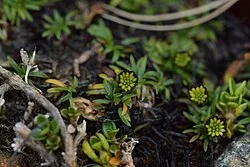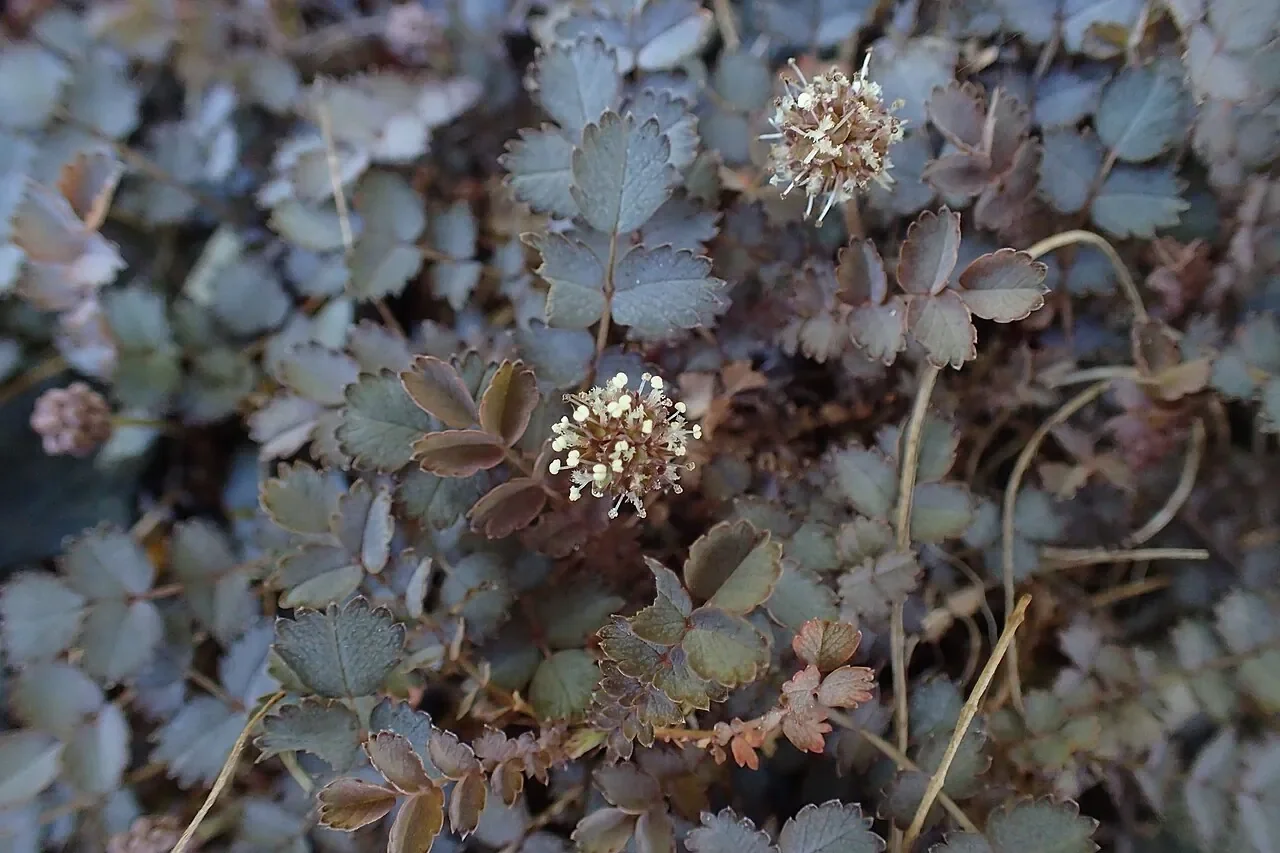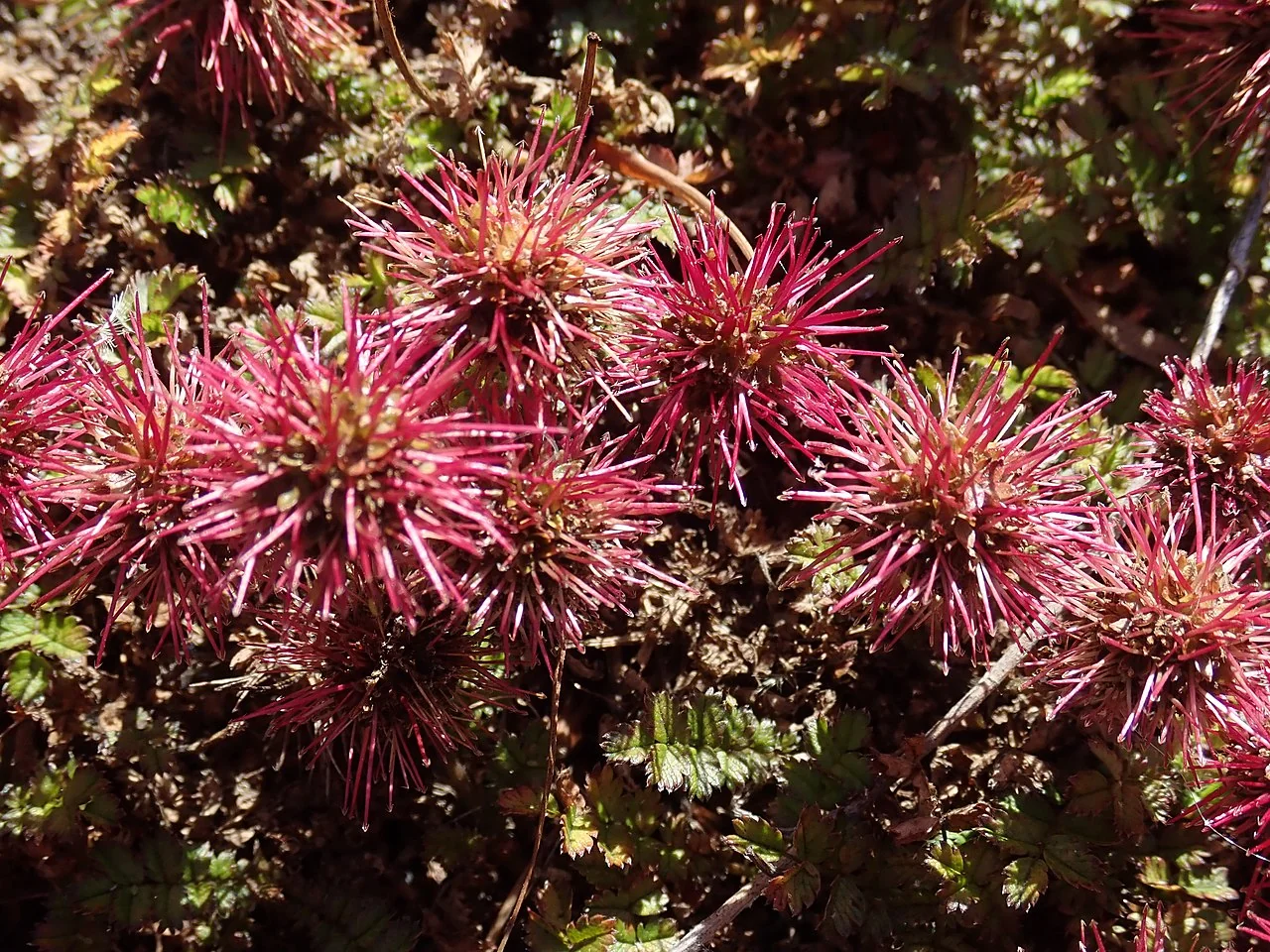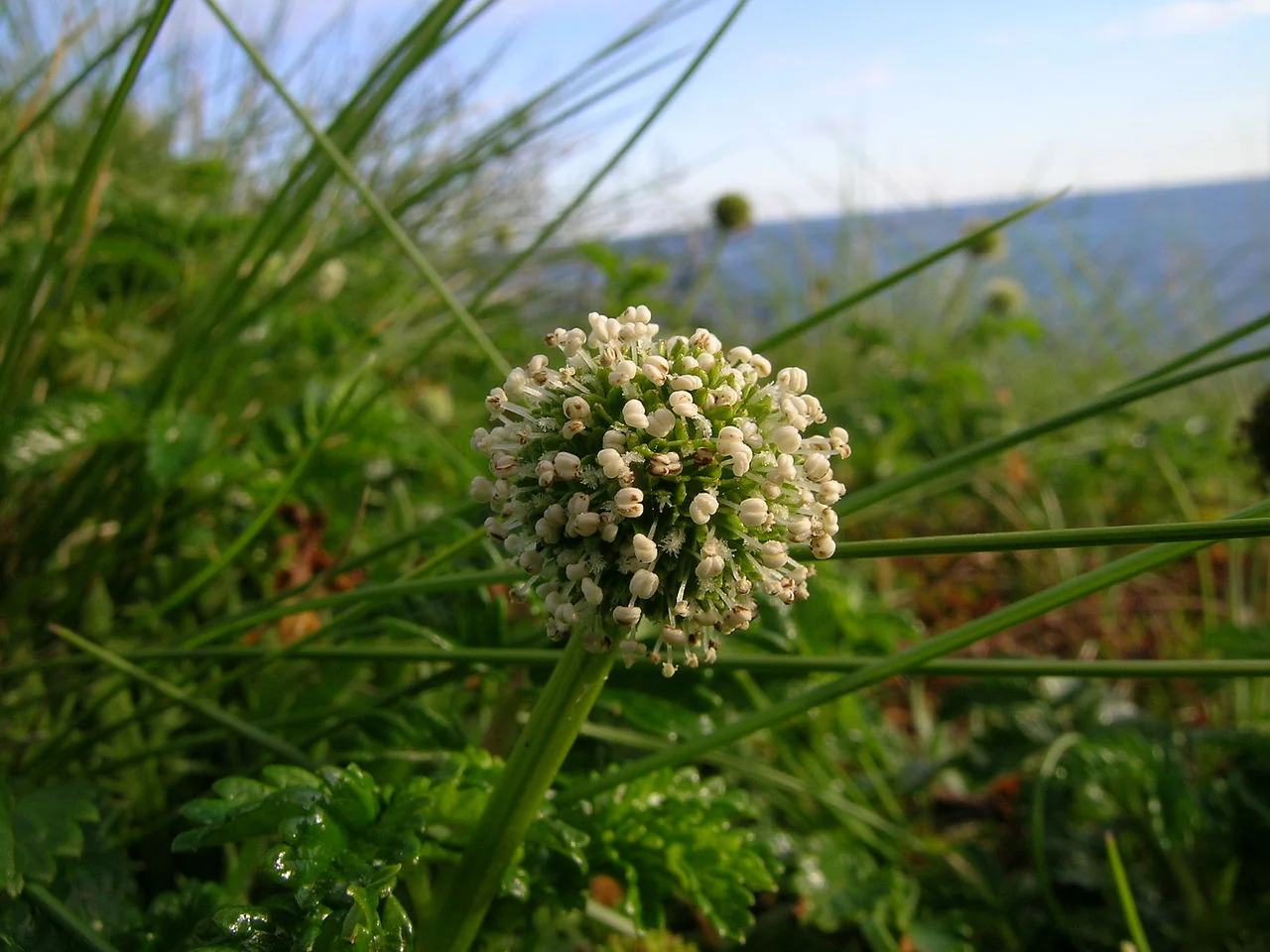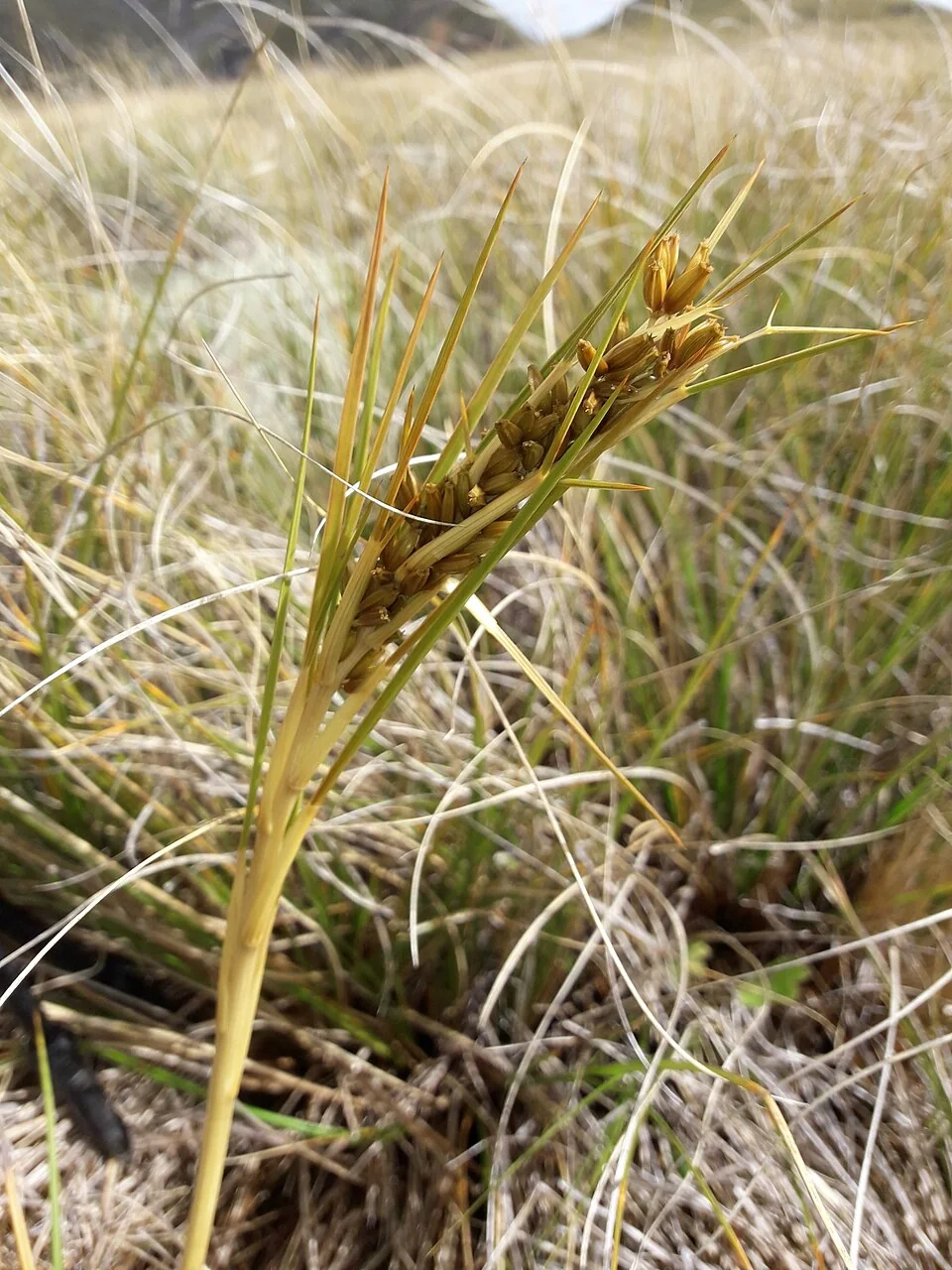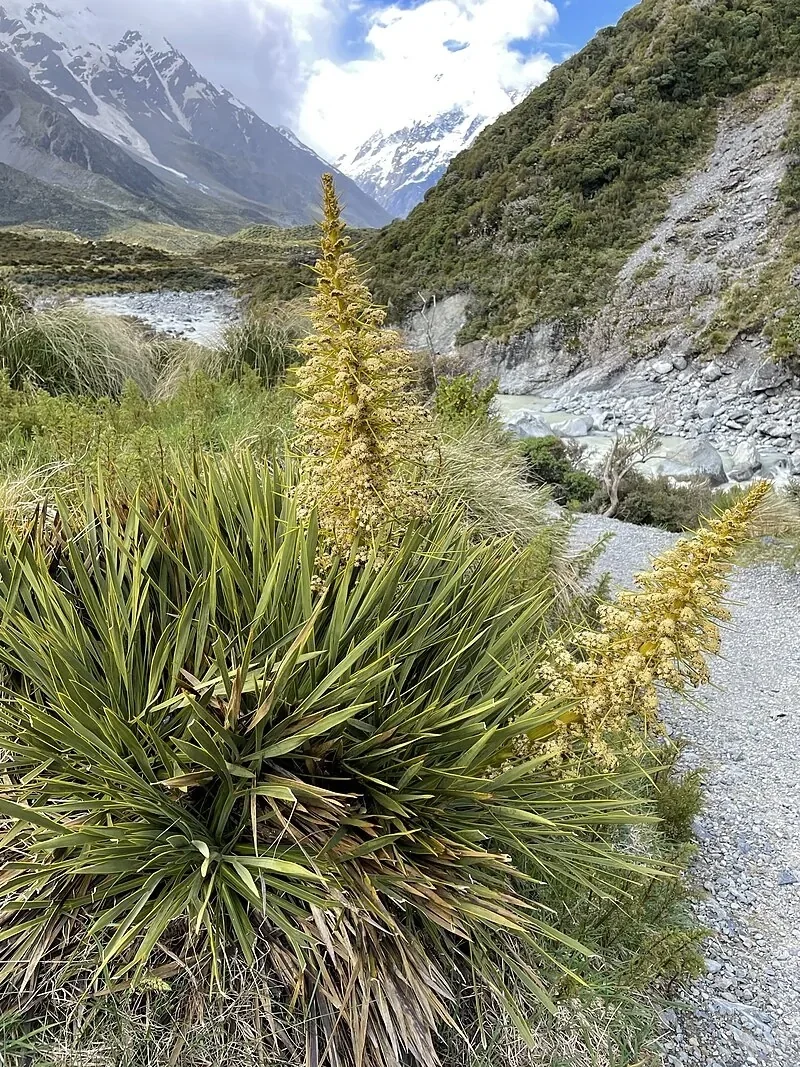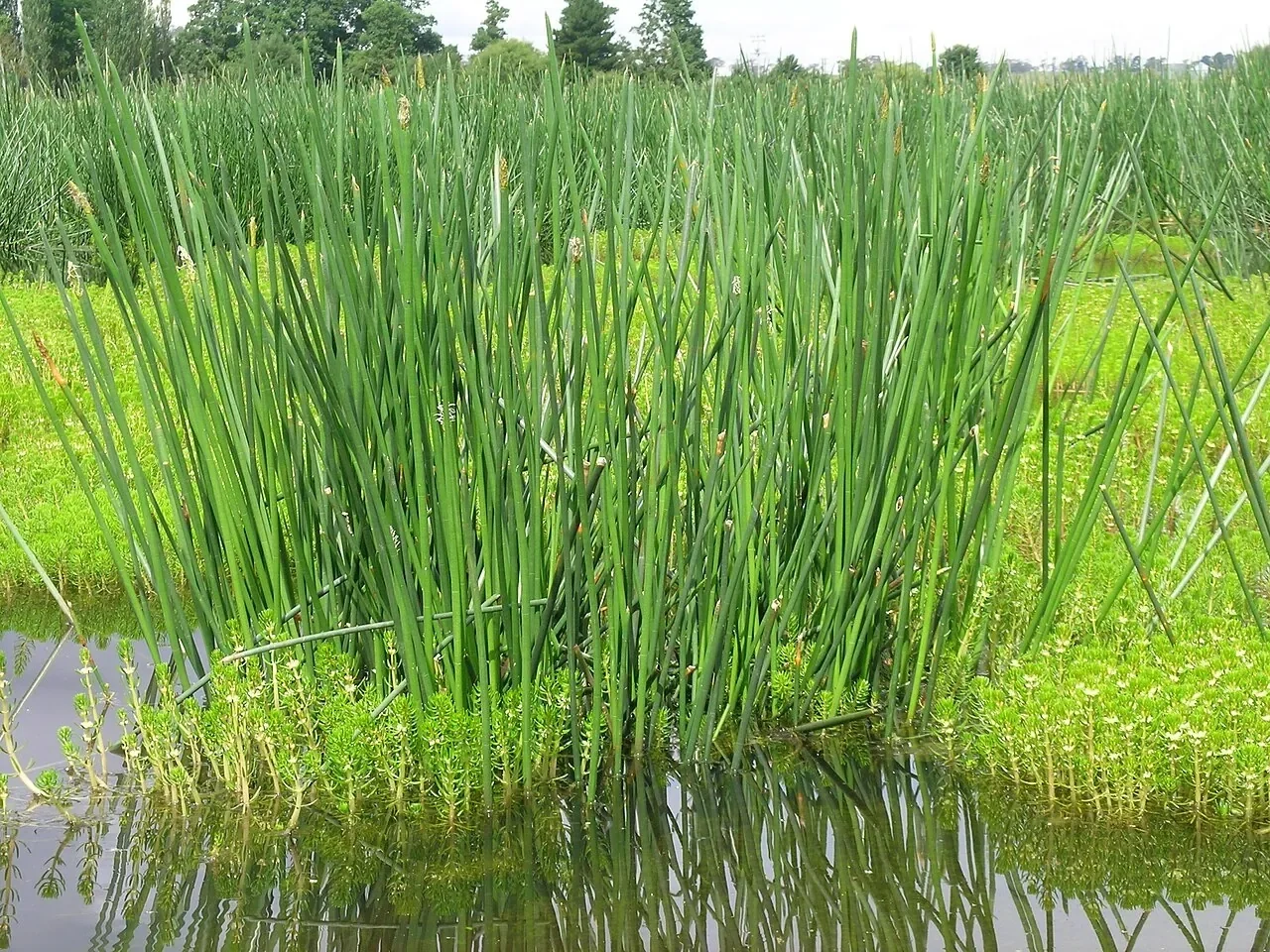
Giant Spike Rush
Eleocharis sphacelata
Eleocharis sphacelata , commonly known as giant spike-rush, tall spikerush, kuta, or pāopāo, is a robust, perennial aquatic sedge belonging to the family Cyperaceae. It is native to Australia, New Zealand, Papua New Guinea, and New Caledonia. It is an erect, rhizomatous perennial herb or grass-like sedge. It grows from stout, woody, creeping rhizomes that are typically 10-15 mm in diameter. The most striking feature is its tall, cylindrical, and hollow stems (culms), which can reach heights of 0.3 to 2 meters, and even up to 5 meters in deep water. These culms are 4-12 mm in diameter and have obvious internal transverse septa (partitions) at regular intervals. They are typically mid to dark green, sometimes with reddish bases. The plant is largely leafless, with foliage reduced to a small tip on a tubular sheath surrounding the flowering stems, giving it a distinctive straw-like appearance. A solitary, cylindrical inflorescence (spikelet) is terminally erect, measuring 20-70 mm long and 5-10 mm wide, with an acute apex. It produces small, biconvex, nut-like seeds. Small, brown, bract-like flowers are clustered into cylindrical spikelets at the tips of the stems, blooming from spring to autumn. The nut is 2.0-2.5 mm long, orbicular, biconvex, and pale brown, covered with hexagonal reticulations. Eleocharis sphacelata thrives in freshwater wetland environments , including lake margins, swamps, lagoons, bogs, and slow-moving streams and rivers. It prefers sunny situations and can grow in still, deep water, tolerating depths of up to 5 meters. It plays a crucial ecological role by stabilizing wetland soils, providing habitat and shelter for aquatic wildlife (fish, frogs, invertebrates), and serving as nesting material for water birds. In New Zealand, Māori have traditionally valued Eleocharis sphacelata (kuta or pāopāo) for its soft fiber and thermal qualities, using it for weaving items such as clothing and mats.
Explore more NZ native plant guides in our index .
Giant Spike Rush ( Eleocharis sphacelata ) is a native species valued in gardens and restoration for its form and resilience in suitable conditions.

Plant Description
Botanical Features
Eleocharis sphacelata , commonly known as Giant Spike Rush, Tall Spikerush, Kuta, or Pāopāo, is a robust, perennial aquatic sedge native to Australia, New Zealand, Papua New Guinea, and New Caledonia. It grows from stout, woody, creeping rhizomes that are typically 10-15 mm in diameter. Its most striking feature is its tall, cylindrical, and hollow stems (culms), which can reach heights of 0.3 to 2 meters, and even up to 5 meters in deep water. These culms are 4-12 mm in diameter and have obvious internal transverse septa (partitions) at regular intervals. The plant is largely leafless, with foliage reduced to a small tip on a tubular sheath, giving it a distinctive straw-like appearance. A solitary, cylindrical inflorescence (spikelet) is terminally erect, measuring 20-70 mm long and 5-10 mm wide, with an acute apex. It produces small, biconvex, nut-like seeds. It thrives in freshwater wetland environments, including lake margins, swamps, lagoons, bogs, and slow-moving streams and rivers, preferring sunny situations and tolerating depths of up to 5 meters.
Quick Facts
Overview
| Scientific Name | Eleocharis Sphacelata |
|---|---|
| Height | 1-2 m |
| Spread | 1-1.5 m |
| Water Needs | High - aquatic |
| Light | Full sun |
| Frost Tolerance | Good |
| Salt Tolerance | Moderate |
| Growth Rate | Fast |
| Lifespan | Perennial |
Climate Best Suited to
Kāta/Giant spike rush thrives in mild, humid regions with permanent or seasonal standing water in lakes, lagoons, and slow streams. It tolerates cool winters but growth slows with hard frosts or prolonged drought.
Regional Suitability
| City | Climate Suitability |
|---|---|
| Whangārei | Ideal |
| Auckland | Ideal |
| Hamilton | Ideal |
| Tauranga | Ideal |
| Rotorua | Ideal |
| Gisborne | Ideal |
| New Plymouth | Ideal |
| Napier | Ideal |
| Whanganui | Ideal |
| Palmerston North | Ideal |
| Wellington | Ideal |
| Nelson | Ideal |
| Christchurch | Ideal |
| Dunedin | Ideal |
| Invercargill | Ideal |
Natural Habitat
Eleocharis sphacelata , also known as giant spike-rush, tall spikerush, kuta, or pāopāo, is a perennial aquatic sedge native to Australia, New Zealand, Papua New Guinea, and New Caledonia.
Its natural habitat includes freshwater wetland environments such as lake margins, swamps, lagoons, bogs, and slow-moving streams and rivers. It thrives in sunny situations and prefers still, deep water, often growing alongside other wetland plants like raupō (Typha orientalis) and Machaerina articulata. This species can tolerate water depths of up to 5 meters. Eleocharis sphacelata is classified as an Obligate Wetland (OBL) plant, indicating it is almost always found in wetland conditions. It grows from submerged rhizomes in aerobic soils and is adapted to tolerate severe soil anoxia.
Plant Conservation
Eleocharis sphacelata , also known as kutakuta, spikes of doom, bamboo spike sedge, or tall spike sedge, is currently classified as "Not Threatened" in New Zealand as of 2017. This status has remained consistent since at least 2004, with previous assessments in 2004, 2009, and 2012 also listing it as "Not Threatened".
Growing Requirements
Substrate and Water Depth
Plant in saturated, silty to sandy organic substrates at the margins of ponds/lakes. Ideal water depth at planting is 10-40 cm above the rhizome, extending to > 1 m as culms elongate.
- Rich silt/peat/sand substrates; avoid coarse gravels without fines
- Stable water levels improve establishment
- Good water clarity reduces smothering by algae/sediment
Light Requirements
Full sun promotes strong culm production; light shade tolerated in sheltered wetlands.
- Best in full sun
- Light shade acceptable with clear water
Water Quality
Prefers mesotrophic to slightly eutrophic conditions with low salinity. Avoid saline intrusion and severe drawdown.
- Freshwater; low to moderate nutrients
- Avoid extended exposure of rhizomes during drought
Planting Guide
Eleocharis sphacelata , also known as Tall Spike Rush, Giant Spike Rush, Kuta, or Pāopāo, is a robust aquatic sedge native to Australia, New Zealand, Papua New Guinea, and New Caledonia. It is highly valued for its ecological role in stabilizing wetland soils, providing habitat for aquatic wildlife, and its use in wetland restoration projects.
1. Habitat and Growing Conditions:
- Sunlight: Eleocharis sphacelata thrives in full sun.
- Water: It prefers still or slow-moving freshwater and boggy conditions. It can tolerate water depths ranging from shallow margins up to 5 meters, though for ornamental planting, depths of up to 30-50 cm are common. It is an obligate wetland plant, meaning it almost always grows in wetlands.
- Soil: Plant in waterlogged, nutrient-rich soils, such as a mix of silt, sand, and organic matter.
- Climate: It tolerates cool winters, inundations, and short dry periods.
2. Propagation:
-
Division (Easiest Method):
- The most reliable method is by dividing the rhizomes.
- Perform division in spring when new growth is emerging.
- Carefully lift sections of the vigorous rhizome mats, ensuring each piece has several culm bases and intact roots.
- Replant the divisions immediately into a saturated substrate in shallow water, making sure the rhizomes are firmly anchored.
- Maintain consistently wet conditions until the divisions are well-established and new growth appears.
-
Seed:
- Seed propagation can be tricky.
- Fresh seed germinates best if allowed to float on water overlying potting mix, with the water level gradually reduced as germination occurs.
- Scarification pre-treatment and water depths of 5-15 cm can enhance germination rates.
- Germination requires light.
- An after-ripening period of at least 3 months is recommended for seeds. Fresh bleached seeds sown under 5 cm and 15 cm of water showed increased germination from September.
3. Planting Instructions:
- Spacing: When planting individual plants, space them approximately 50-70 cm apart to allow for natural spreading and the formation of dense colonies.
- Submergence: Ensure the base of the plant is submerged in freshwater.
4. Care and Maintenance:
- Pruning: Trim dead or old stems in late winter to encourage fresh regrowth, prevent overcrowding, and reduce disease risk.
- Thinning: In nutrient-rich ponds, occasional thinning may be necessary to prevent overcrowding due to its vigorous growth.
- Fertilization: Eleocharis sphacelata generally does not require fertilizer.
- Pests: It is typically pest-free.
By following these guidelines, you can successfully plant and maintain Eleocharis sphacelata , contributing to a healthy aquatic environment and enjoying its distinctive appearance.
Ecological Role
Eleocharis sphacelata , commonly known as giant spike-rush, kuta, or pāopāo, plays a crucial ecological role in freshwater wetland ecosystems, particularly in New Zealand, Australia, and Papua New Guinea. This robust aquatic sedge is often found in still, deep water along lake and pond margins, swamps, lagoons, and bogs, and can tolerate depths of up to 5 meters.
Habitat and Shelter
- Eleocharis sphacelata provides vital habitat, shelter, and protection for a variety of aquatic wildlife, including fish, frogs, invertebrates, and birds. Dense beds of this plant create refuge for these organisms.
Food Source
- The culms of E. sphacelata offer surfaces for algae colonization and serve as a food source for herbivorous aquatic invertebrates.
Water Quality and Soil Stabilization
- It contributes to the oxygenation of water bodies and aids in sediment capture, which helps stabilize wetland soils and improve water clarity. Its presence can also reduce bank erosion.
Niche Dominance and Anoxia Tolerance
- In New Zealand, E. sphacelata often dominates the deepwater margins of freshwater wetlands, sometimes being the sole occupant of this habitat type. It is well-adapted to severe soil anoxia, allowing it to thrive in conditions where other plant species might not survive.
Gas Transport
- The plant's lacunar system facilitates gas transport, including the release of methane from wetland sediments, influencing the biogeochemical cycles of these environments.
Restoration Efforts
- Due to its ecological benefits, E. sphacelata is increasingly utilized in wetland restoration projects and constructed wetlands to enhance biodiversity and support aquatic ecosystems.
Uses and Significance
Dense Kāta beds provide habitat, oxygenation and sediment capture, stabilising margins and offering refuge for fish and aquatic invertebrates.
Cultural and Practical Uses
Kāta culms have traditional weaving value in some rohe. In restoration, it is used to re-establish emergent wetland structure and buffer shorelines.
Landscaping Uses
Eleocharis sphacelata , also known as Tall Spike Rush, Giant Spike Rush, Kūta, or Pāopāo, is a robust aquatic sedge with significant landscaping applications, particularly in wetland and water garden settings.
Landscaping Uses:
- Wetland Restoration and Riparian Planting: It is invaluable for wetland restoration and specialized aquatic landscaping projects due to its robust nature and ability to thrive in waterlogged soils. It helps stabilize wetland soils and creek beds, reduces bank erosion, and improves water clarity.
- Ornamental Plant for Ponds and Water Margins: Eleocharis sphacelata is an excellent ornamental plant for ponds, dams, and creek plantings, adding a unique vertical element with its tall, cylindrical, hollow stems. It can grow in water up to 30cm deep, and even up to 5 meters in deep water, with stems reaching 0.3 to 2 meters in height. It is commonly used around ponds and water margins, where it can help keep ponds oxygenated and clear.
- Habitat Creation: Dense beds of Eleocharis sphacelata provide crucial habitat, oxygenation, and sediment capture, offering refuge for fish, frogs, aquatic invertebrates, and nesting material for water birds.
- Mass Planting: It is suitable for mass planting in wetland areas or around pond margins, forming dense colonies over time.
- Sensory Gardens: The plant can be used in sensory gardens for its decorative flower and seed-heads, and its hollow stems can be snapped into pieces.
Eleocharis sphacelata prefers full sun and boggy conditions, thriving in still or slow-moving freshwater environments. It is a low-maintenance plant, though regular thinning may be needed in nutrient-rich environments to manage its vigorous growth. It is important to note that it may become invasive and too vigorous for small water bodies.
Seasonal Care Calendar
Spring
Best time to divide rhizomes and plant into rising water tables.
- Plant divisions at 10-20 cm depth
- Control weeds on exposed margins
Summer
Rapid culm growth; maintain water levels and manage algal smothering if nutrient pulses occur.
- Monitor water clarity and depth
- Protect new plantings from trampling
Autumn
Consolidation phase; top-dress with wetland-safe organic matter if substrate is poor.
Winter
Growth slows; avoid drastic drawdown exposing crowns to frost.
Pruning and Maintenance
Techniques and Timing
Remove senescent, collapsed culms to reduce detritus where practical. Avoid cutting live culms below waterline unless necessary for access.
How to Grow Giant Spike Rush
Giant Spike Rush, also known as Kāta or Tall Spikerush, is a robust and distinctive aquatic sedge that adds a unique vertical element to wetland gardens, ponds, and riparian planting schemes. Its tall, cylindrical, hollow stems are perfectly adapted to freshwater environments, making it an excellent choice for stabilizing wetland soils, filtering water, and providing habitat for aquatic wildlife. While it requires consistently wet conditions, its resilience and ecological value make it a rewarding plant to cultivate, especially for those looking to restore native wetland habitats.
From Division
Division is the easiest and most reliable method for propagating Giant Spike Rush. This is best done in spring when new growth is emerging. Carefully lift sections of the vigorous rhizome mats, ensuring each piece has several culm bases and intact roots. Replant the divisions immediately into a saturated substrate, such as a mix of silt, sand, and organic matter, at the margins of ponds or in shallow water. Ensure the rhizomes are firmly anchored. Maintain consistently wet conditions until the divisions are well-established and new growth appears. This method is excellent for quickly establishing new colonies or expanding existing ones.
From Seed
Propagating Giant Spike Rush from seed is also possible, though germination can be variable and slower than division. Collect ripe achenes (small, dry, one-seeded fruits) when they are mature, typically in late summer or autumn. Clean the seeds thoroughly. Sow the seeds into submerged trays of fine sand or peat, ensuring they remain constantly wet. Maintain warm, bright conditions. Germination can be erratic and may take several weeks to months. Once seedlings have developed a few true leaves and are large enough to handle, they can be carefully transplanted into individual pots and grown in consistently wet conditions before planting out into their final aquatic environment.
Pests and Diseases
Common Problems and Solutions
Eleocharis sphacelata , also known as Tall Spike Rush, is generally considered a low-maintenance plant that is "generally pest-free."
While it is not typically prone to specific pests or diseases, some factors can affect its culms:
- Physical Damage: The soft and spongy culms of Eleocharis sphacelata can be easily damaged by weather, waterfowl, and human disturbance.
- Aquatic Insects: Aquatic insects may bore holes into the culms to access oxygen from the internal spaces, which is part of the plant's ecological interaction within its wetland habitat. This is not typically described as a detrimental pest infestation.
Cultural Significance
Eleocharis sphacelata , also known as giant spike-rush, kuta, or pāopāo, holds significant cultural importance, especially for the Māori people of New Zealand.
Cultural Significance Stems Primarily from Traditional Uses:
- Weaving Material: The long, dried culms (stems) of Eleocharis sphacelata were traditionally used by Māori for weaving various items. These included clothing, mats, and warm coverings within their whare (houses). The plant's soft fiber and thermal qualities were highly valued for these purposes.
- Tukutuku Panels: The dried culms were also sometimes incorporated into tukutuku panels, which are decorative woven panels used in Māori meeting houses.
- Cultural Value: Despite a decline in its use, the cultural value of Eleocharis sphacelata as a resource for raranga (weaving) remains pertinent for Māori, particularly in regions where it is locally abundant, such as Northland. The Ngāti Pikiao people, for instance, were renowned for their soft and comfortable pāopāo mats made from this plant.
Beyond its direct uses, the plant's ecological role in wetlands is also recognized, contributing to its overall significance.
Bonus Tip
Expert Growing Advice
Eleocharis sphacelata , the Giant Spike Rush, is a true marvel of wetland adaptation! Its most striking feature is its ability to grow incredibly tall, with hollow stems reaching up to 5 meters in deep water. These stems have fascinating internal partitions, like tiny ladders, that help the plant transport oxygen to its submerged roots, allowing it to thrive in anaerobic (oxygen-deprived) soils. This ingenious adaptation makes it a vital component of wetland ecosystems, where it not only stabilizes soils but also provides crucial habitat and shelter for a diverse array of aquatic wildlife.

